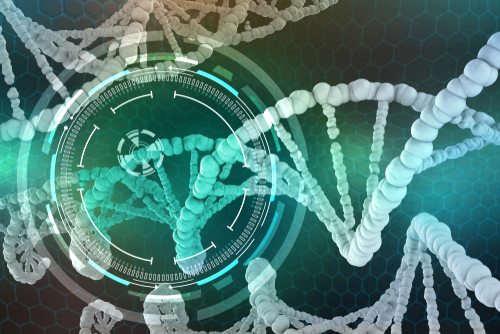New Viral Vector May Make Gene Therapy for Sickle Cell More Effective, NIH Study Reports

A newly designed viral vector — the vehicle that delivers a gene therapy to a patient’s cells — for use in sickle cell anemia is more efficient than earlier vectors at introducing healthy copies of genes into stem cells and can be produced in greater amounts, studies in animal models show.
The study “Development of a forward-orientated therapeutic lentiviral vector for hemoglobin disorders” was published in the journal Nature Communications.
Hemoglobin is the protein in red blood cells that binds oxygen, allowing oxygen to be transported around the body. Mutations in the HBB gene, which encodes a component of hemoglobin, causes sickle cell.
Gene therapies involve either altering the mutated gene or introducing a healthy version of that gene to the body. Still under development for sickle cell, an estimated 27 patients have undergone experimental gene therapy. One strategy involves removing hematopoietic stem cells (which function to produce blood cells) from a patient’s bone marrow. A healthy copy of the HBB gene is then introduced into the cells using a modified, harmless virus known as a viral vector. The cells are then transplanted back into the patient where they will produce healthy red blood cells.
Traditionally, viral vectors for sickle cell have been designed in a way known as reverse structural orientation. This means that the HBB gene is translated or “read” from right to left, like reading an English sentence backwards. The reverse structural orientation design ensures that a key section of the gene (known as intron 2), which is necessary for the production of high levels of the HBB gene, is retained during viral vector preparation.
However, this design makes preparing the viral vectors more difficult, and decreases the efficiency of introducing the gene into the stem cells.
Researchers at the National Institutes of Health designed a new viral vector, one in which the HBB gene is forward orientated and read from left to right. Genes essential for the virus were inserted into intron 2, meaning that only vectors that retained intron 2 would be produced (a type of positive selection).
“Our new vector is an important breakthrough in the field of gene therapy for sickle cell disease,” John Tisdale, MD, chief of the Cellular and Molecular Therapeutic Branch at the National Heart, Lung, and Blood Institute (NHLBI) and the study’s senior author, said in a press release.
“It’s the new kid on the block and represents a substantial improvement in our ability to produce high capacity, high efficiency vectors for treating this devastating disorder,” he added.
The researchers compared the new vectors to traditional reverse-orientated vectors in mouse and monkey models. The new vectors were four to 10 times more efficient at introducing the healthy HBB gene into the stem cells, and could carry up to six times more HBB genes compared to the conventional vectors.
Furthermore, the new vectors remained incorporated into the cells of monkeys up to four years after a transplant. These vectors could also be produced in greater amounts, which may lessen the time and costs required for large-scale vector production.
The researchers hope that these characteristics will make gene therapy for sickle cell disease more effective and increase its use. The new vector design still needs to be tested in clinical trials in patients.
“Our lab has been working on improving beta-globin vectors for almost a decade … and finally decided to try something radically different — and it worked,” Tisdale said.
“These findings bring us closer to a curative gene therapy approach for hemoglobin disorders,” he added.






